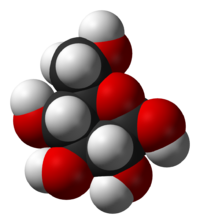If you've ever wondered why animals can digest alpha glucose but not beta glucose, you're not alone. It’s an interesting and important question related to how animals process different forms of sugar, and it has a lot to do with the structure of these sugars and the digestive enzymes involved. In this article, we’ll break it down and explain the science behind this digestive phenomenon in simple terms.

First, let’s clarify the two types of glucose – alpha glucose (α-glucose) and beta glucose (β-glucose). These are glucose isomers, meaning they are molecules that have the same chemical formula but different structures. The key difference lies in the orientation of a specific hydroxyl group (-OH) on the glucose molecule’s first carbon atom.
In alpha glucose, the hydroxyl group on the first carbon is oriented downward (below the plane of the molecule).
In beta glucose, the hydroxyl group is oriented upward (above the plane of the molecule).
This subtle difference in structure is what makes all the difference in terms of how the sugar behaves and how it's digested.
When animals digest sugars, the process primarily involves breaking down glycosidic bonds between sugar molecules. In the case of alpha glucose, animals' digestive systems are equipped with enzymes like amylase, which break down alpha-glucose polysaccharides (like starch) into smaller molecules that the body can absorb.
However, the bond formation between alpha glucose molecules in starch is much easier for enzymes to break down, compared to the beta glucose linkage in cellulose. This is why animals can digest alpha glucose but struggle with beta glucose.
The difference in how alpha glucose and beta glucose are digested comes down to enzyme specificity. Amylase, a digestive enzyme in animals, is specially designed to break the alpha linkage found in starch, which is made up of alpha-glucose molecules.
On the other hand, cellulose, a plant fiber made up of beta-glucose, requires a different enzyme to break down its beta-1,4 glycosidic bonds. Unfortunately, most animals, including humans, lack the enzyme cellulase, which is needed to break these beta glucose linkages. This is why animals can't digest beta glucose in cellulose, even though it's abundant in their diet.
Most animals, including humans, rely on starch digestion to provide them with a significant portion of their energy. Starch is composed of long chains of alpha-glucose, which are easy for amylase to break down into simple sugars that can be absorbed into the bloodstream.
Beta-glucose, however, is found in cellulose. While cellulose is a type of polysaccharide, its beta-1,4 glycosidic bonds form a rigid, indigestible structure that amylase cannot break down. That’s why humans and most animals can’t digest the beta glucose in cellulose, leading to it passing through the digestive tract as dietary fiber.
In plant-based foods, cellulose is a major component of the cell wall, and it’s made up of beta-glucose. This makes it one of the most abundant organic polymers on Earth. However, animals lack the necessary digestive machinery to break down cellulose into usable sugars because the beta glucose is locked in those tough beta linkages.
While cellulose is a form of dietary fiber, it’s important because it helps with digestion in animals by adding bulk to stool and aiding in bowel regularity. Despite not being digestible, cellulose plays a crucial role in the digestive process, especially in herbivores that eat a lot of plant material.
Humans and other animals have evolved to efficiently digest alpha-glucose in foods like bread, potatoes, and rice. These foods contain starch, which is composed of alpha-glucose linked by alpha-1,4 and alpha-1,6 glycosidic bonds. The body breaks down this alpha-glucose into simple sugars, which are absorbed by the small intestine and provide energy.
However, we can't digest beta-glucose in cellulose the same way. While cellulose is important for gut health, beta-glucose is not absorbed as an energy source. This is why humans and most animals can digest alpha glucose efficiently but cannot digest beta glucose from cellulose.
Herbivores like cows, termites, and certain insects can digest beta glucose to some extent. These animals have a symbiotic relationship with microorganisms in their guts, such as bacteria or protozoa, which produce cellulase to break down the beta-glucose in cellulose. This process allows them to extract energy from plant materials that would otherwise be indigestible.
In summary, animals can digest alpha glucose but not beta glucose due to the differences in glycosidic bonds. The structure of alpha-glucose allows digestive enzymes like amylase to break it down efficiently, providing energy from starch. However, beta-glucose, which forms the tough cellulose, remains undigested in most animals because of the inability to break the beta-1,4 glycosidic bonds. This is why humans, carnivores, and omnivores can digest alpha glucose but rely on fiber for gut health instead of breaking down beta glucose.
Understanding these biochemical processes highlights the fascinating complexities of digestion and the specialization of different enzymes in the digestive systems of various animals.
animal tags: alpha-glucose beta-glucose
We created this article in conjunction with AI technology, then made sure it was fact-checked and edited by a Animals Top editor.